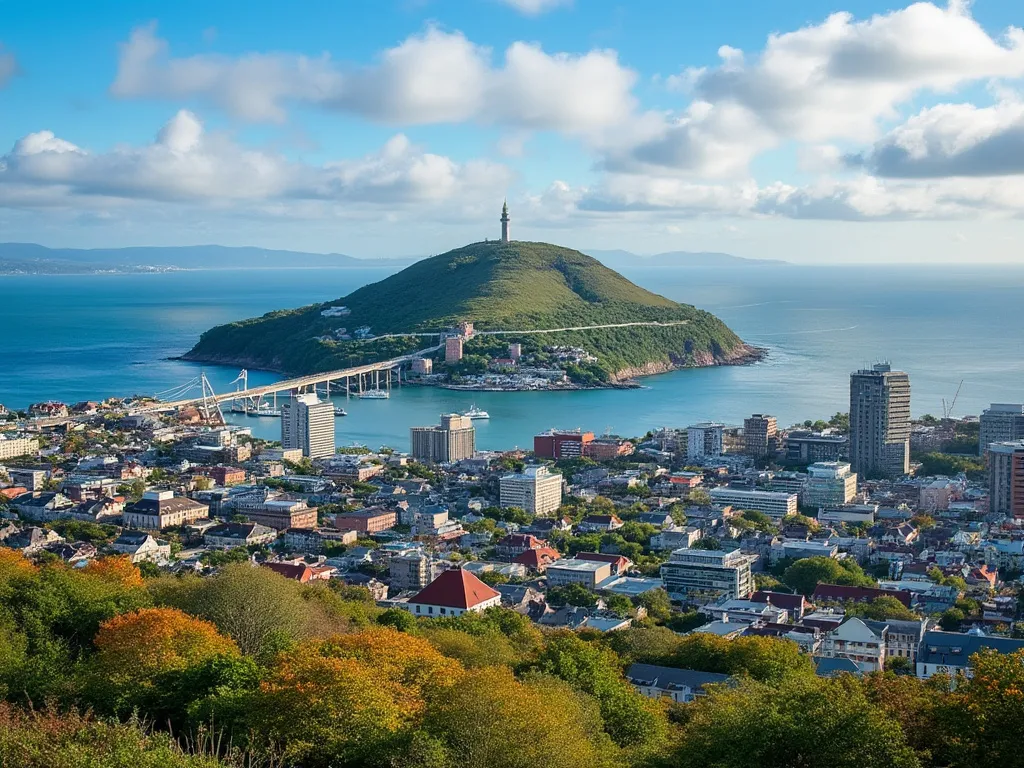
Saint-Pierre es la capital y la ciudad más grande de la colectividad de ultramar de Saint Pierre y Miquelon, un archipiélago en el Océano Atlántico Norte. Ubicada en la isla de Saint-Pierre, la ciudad tiene una rica historia y cultura moldeada por su posición estratégica entre América del Norte y Europa.
Información sobre Saint-Pierre
| País | 🇵🇲 San Pedro y Miquelón |
| Población | 5,509 (estimación 2020) |
| Coordenadas | 46.7667° N, 56.1833° O |
| Área | 25 km² (9.7 mi²) |
| Clima | Clima oceánico subpolar |
| Idioma | Francés |
| Moneda | Euro |
| Zona horaria | UTC-3 (PMST) |
| Proximidad a otras ciudades importantes | Aproximadamente 20 km (12 mi) al suroeste de la isla de Miquelon, 30 km (19 mi) al noroeste de Terranova, Canadá |
Datos interesantes sobre Saint-Pierre
- Saint-Pierre es la ciudad más poblada de Saint Pierre y Miquelon, representando aproximadamente el 90% de la población del archipiélago.
- La ciudad tiene un estilo arquitectónico único, con edificios de madera de colores brillantes y techos inclinados.
- Saint-Pierre alberga el hospital en funcionamiento continuo más antiguo de América del Norte, el Hospital Saint-Pierre, que fue establecido en 1886.
Atracciones turísticas en Saint-Pierre
- Museo de Saint-Pierre: un museo que muestra la historia, geología y vida silvestre de la isla.
- Faro de Pointe aux Canons: un faro histórico que ofrece impresionantes vistas del Océano Atlántico.
- Puerto de Saint-Pierre: un pintoresco puerto pesquero y centro de la industria de mariscos de la ciudad.
- Ile aux Marins: una pequeña isla frente a la costa de Saint-Pierre, con un faro histórico y vistas panorámicas.
Antecedentes históricos de Saint-Pierre
El área ha sido habitada por pueblos indígenas durante miles de años, pero el primer explorador europeo en visitar la isla fue João Álvares Fagundes, un explorador portugués, en 1520. En el siglo XVII, los franceses establecieron una colonia en la isla, y se convirtió en un importante puerto pesquero y centro de suministro. Durante la Segunda Guerra Mundial, la ciudad jugó un papel significativo como base de las Fuerzas Francesas Libres.
Ubicación geográfica de Saint-Pierre
Saint-Pierre está situada en una estrecha península en la costa noroeste de la isla de Saint-Pierre. La ciudad está rodeada por una costa escarpada y vistas panorámicas del Océano Atlántico. El terreno de la isla se caracteriza por costas rocosas, playas de arena y colinas onduladas.
Significado cultural de Saint-Pierre
Saint-Pierre es una ciudad culturalmente rica y diversa, con una mezcla única de influencias francesas y norteamericanas. La ciudad alberga varios museos, incluido el Museo de Saint-Pierre, que presenta exhibiciones sobre la historia, geología y vida silvestre de la isla. La ciudad también organiza varios festivales a lo largo del año, incluido el Festival de Saint-Pierre, que celebra el aniversario de la ciudad.
Importancia económica de Saint-Pierre
La economía de Saint-Pierre está impulsada principalmente por la pesca, el turismo y los servicios. La ciudad tiene un importante puerto pesquero, y la economía local se beneficia del procesamiento y exportación de productos del mar. El turismo también juega un papel importante, con visitantes atraídos por la belleza natural de la ciudad, las oportunidades recreativas al aire libre y el patrimonio cultural.
Conclusión sobre Saint-Pierre
Saint-Pierre es una ciudad única y cautivadora que ofrece una mezcla de historia, cultura y belleza natural. Desde su rico patrimonio histórico hasta sus impresionantes paisajes, la ciudad es un destino que debes visitar si estás interesado en explorar los encantos de Saint Pierre y Miquelon.
 Garapan
Garapan
 San José
San José
 Saint Helier
Saint Helier
 Saint John's
Saint John's